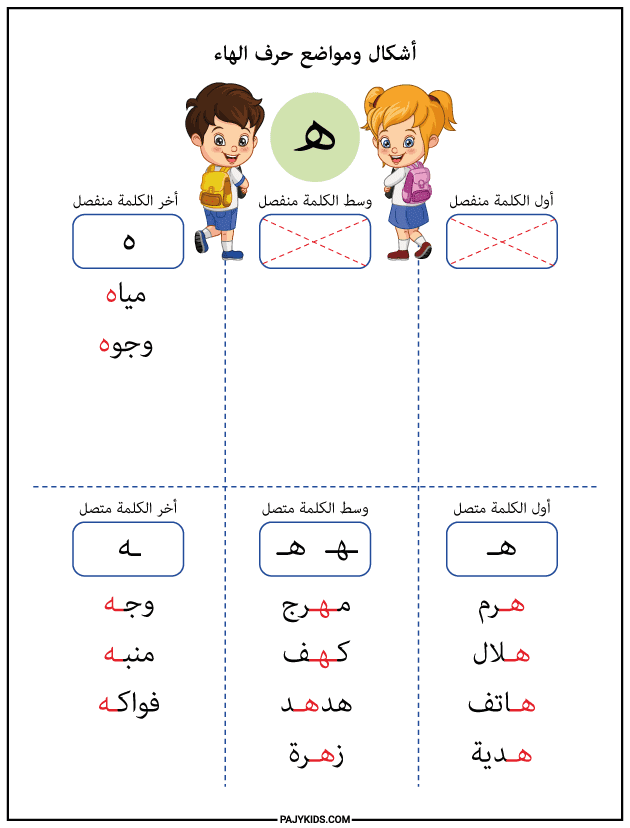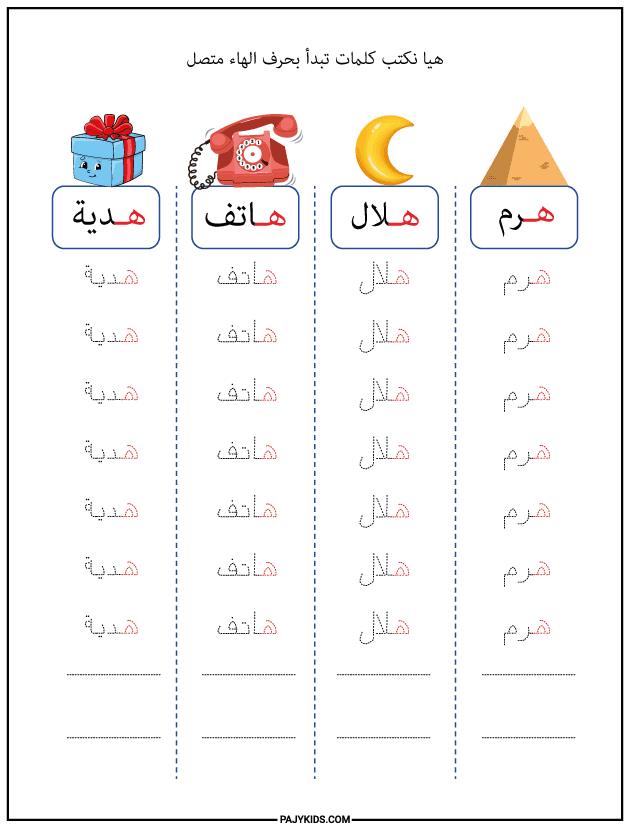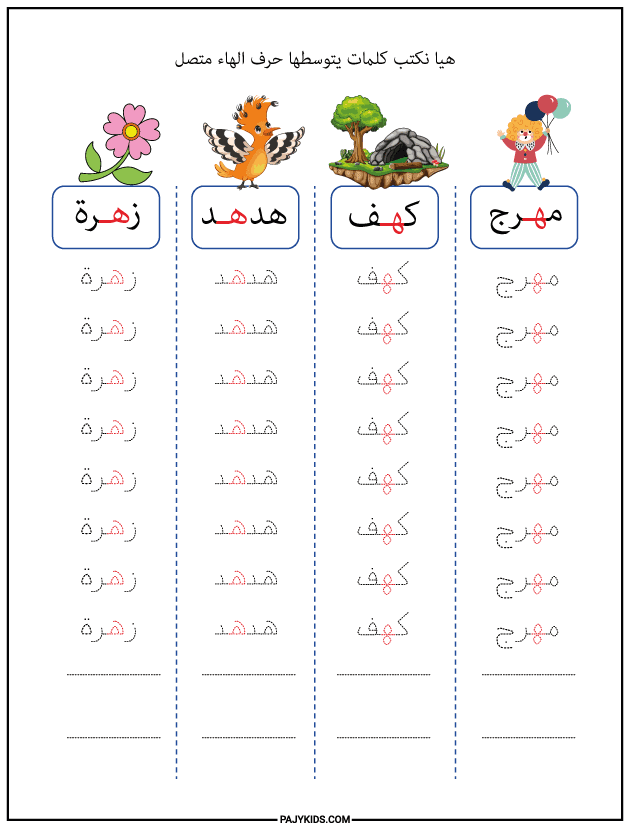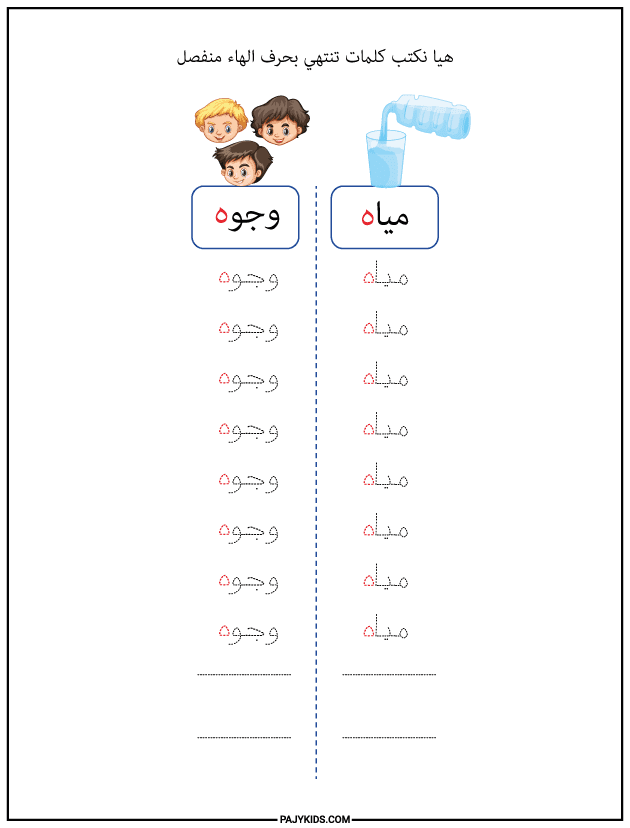The letter Haa’ (هـ) is considered one of the most elegant and distinctive letters in the Arabic language. It is characterized by its soft sound and ease of pronunciation. However, the forms of the letter Haa’ vary significantly depending on its position within a word—whether at the beginning, middle, or end—and whether it is connected to adjacent letters or written separately. Understanding these various forms plays a key role in developing learners’ reading and writing skills, particularly during the early stages of acquiring the Arabic language.
In this lesson, we will explore the forms of the letter Haa’ through a simplified, educational approach supported by illustrative examples.
Interactive Exercises to Learn the Forms of the Letter Haa’

- Form of the Letter Haa’ at the Beginning of a Word
When the letter Haa’ (هـ) appears at the beginning of a word, it connects only to the following letter and is written as: هـ.
Examples: Hilāl (هلال), Hātif (هاتف), Hadiyya (هدية), Hirr (هر), Hawā’ (هواء), Hatif (هاتف), Haram (هرم).
In this position, the letter appears small with a curved shape descending from the baseline. This is one of the essential forms of the letter Haa’ that learners must practice thoroughly, as it occurs frequently in everyday vocabulary. Writing this form correctly is a fundamental step toward mastering proper Arabic handwriting.

- Form of the Letter Haa’ in the Middle of a Word
When Haa’ occurs in the middle of a word, it connects to both the preceding and following letters, and is written as: ـهـ or هـ, depending on the script style.
Examples: Mihna (مهنة), Muharrij (مهرج), Bahja (بهجة), Zahra (زهرة), Kahf (كهف), Hudhud (هدهد).
In this position, the shape of the letter appears small and embedded within the word. It may vary slightly in different Arabic calligraphy styles such as Ruq‘ah or Naskh. It is important for students to become familiar with this specific form of the letter Haa’ and to practice it consistently to develop fluid connected writing.

- Form of the Letter Haa’ at the End of a Word (Connected)
When Haa’ appears at the end of a word and is connected to the preceding letter, it is written as: ـه.
Examples: Wajh (وجه), Munabbih (منبه), Fawākih (فواكه).
In this form, the letter typically appears as a closed loop or circle, and the presence of a dot or ornamentation may vary depending on the script style. This is a particularly significant form of the letter Haa’, as it is often found in pronouns and descriptive words. Accurate writing of this form is essential for clarity and proper usage.

- Form of the Letter Haa’ at the End of a Word (Isolated)
If Haa’ appears at the end of a word after a letter that does not connect to it, it is written in its isolated form: ه.
Examples: Miyāh (مياه), Wujūh (وجوه).
This form appears clearly and independently, often shaped like a closed circle. It is among the simpler forms of the letter Haa’, which makes it easy for students to recognize, especially when reading short texts.

Regular practice of the forms of the letter Haa’ aids students in improving both their handwriting and understanding of word structure. It also enhances their ability to distinguish between similar-looking letters. Integrating Haa’ into copying exercises, interactive tasks, and coloring activities helps reinforce both visual and motor memory of the letter, thereby solidifying its shape in the learner’s mind.